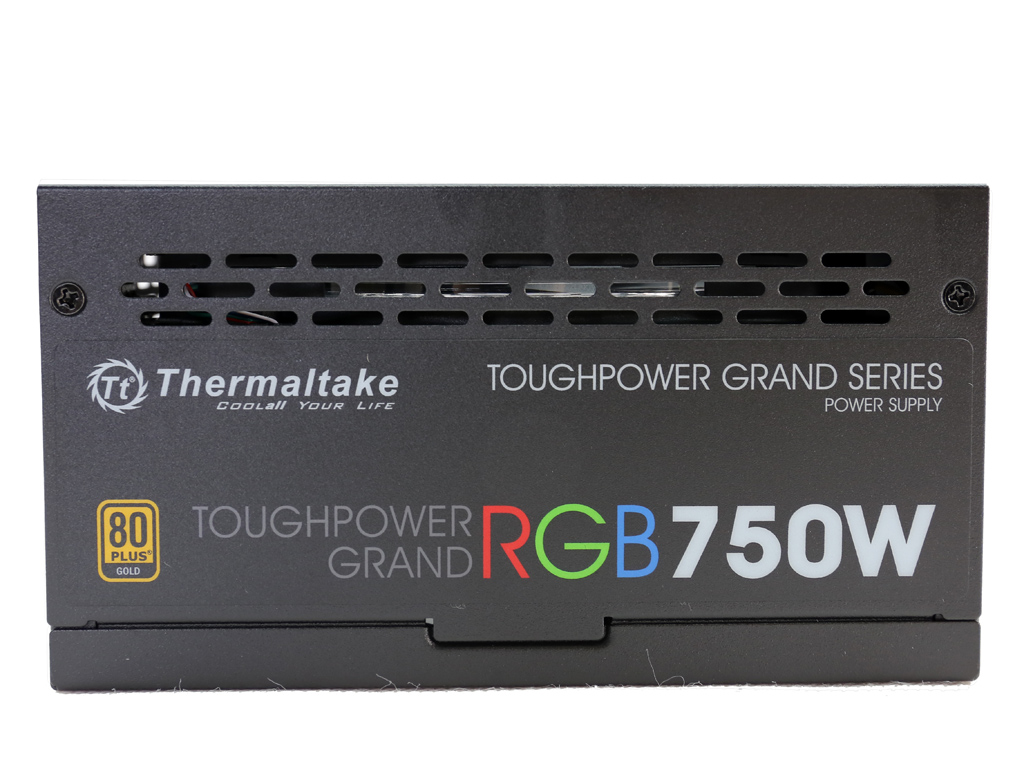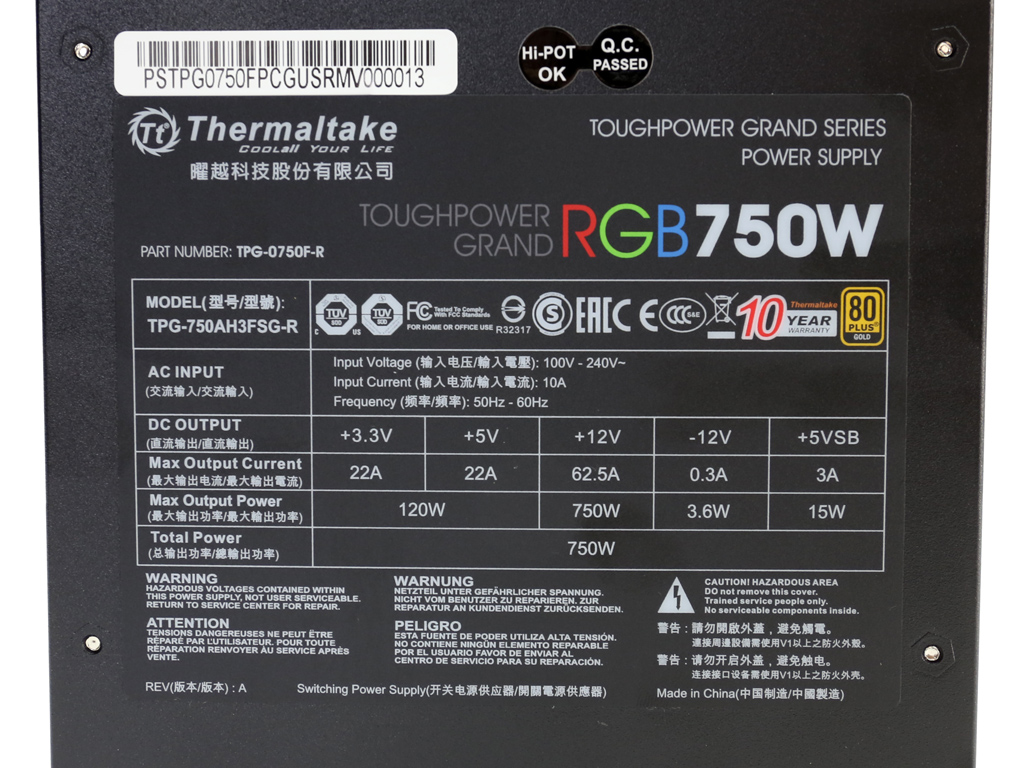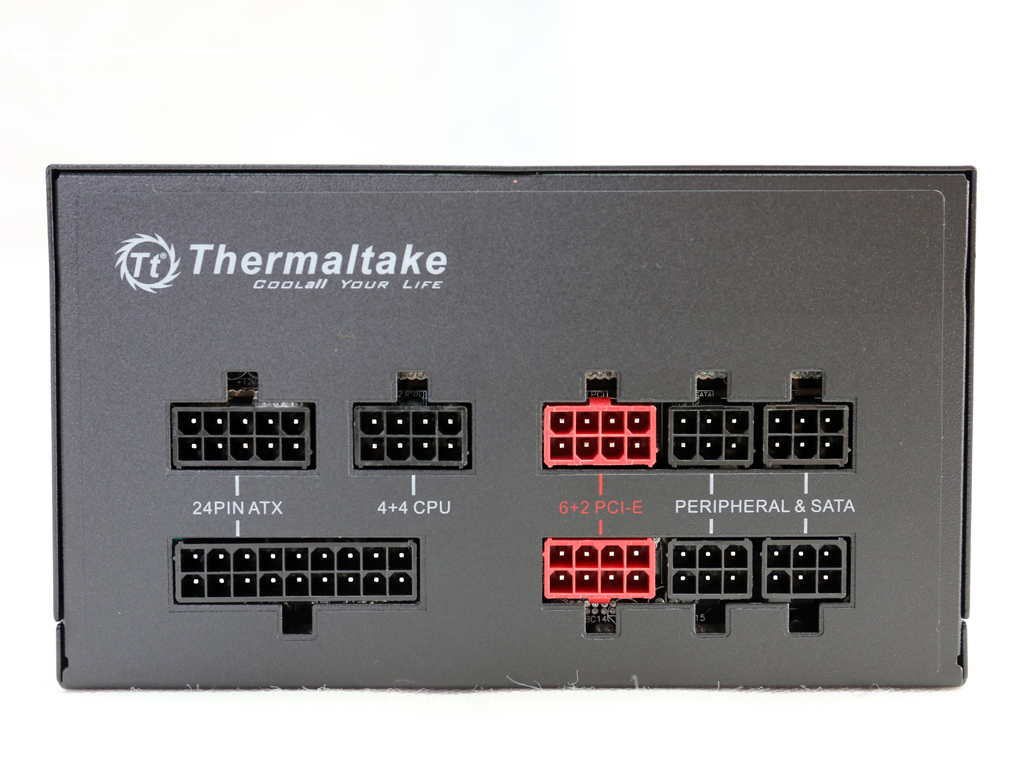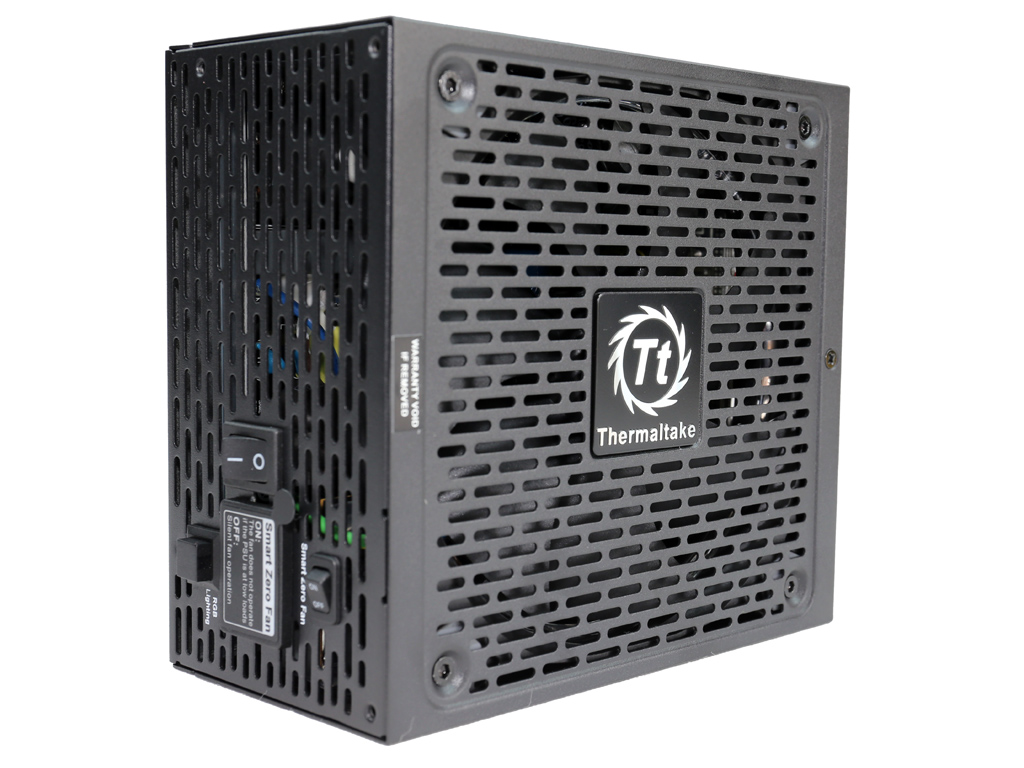Thermaltake Toughpower Grand RGB 750W PSU Review
RGB LED lighting is the new hotness, and a lot of power supplies are incorporating it. Thermaltake's Toughpower Grand RGB with 750W of maximum power boasts RGB lighting, surprisingly good performance, and modular cabling.
Why you can trust Tom's Hardware
Packaging, Contents, Exterior, And Cabling
Packaging







The front of the box features a quarter-shot of the PSU with its modular panel exposed and an LED ring around the fan. Thermaltake highlights this product's assets, including its 10-year warranty, a semi-passive mode, fully modular cabling, the 100% Japanese caps, low ripple, and the RGB fan. An 80 PLUS Gold badge resides in the bottom-left corner, while the unit's model description is highlighted in large lettering.
There is also a feature list around back. New pieces of information include the single +12V rail, support for 256 colors from the LED lighting, the LED's available modes, and the 50°C temperature rating for continuous full load output.
A couple of graphs illustrate the efficiency and fan noise curves. According to the latter, Thermaltake's fan starts spinning once the load exceeds 20% of the PSU's maximum-rated capacity. There are two more diagrams depicting the low-ripple design and the strict load regulation (not voltage, as TT describes it), which is supposed to fall within 2% on all rails. On the box's back, we also spot a connector list and power specifications table.
On the sides of the box, Thermaltake illustrates the RGB fan's five available lighting modes. The company fails to mention the last mode, which disables lighting altogether.
Contents



Packing foam ensures the PSU reaches you in pristine condition. A nice-looking cloth with TT's logo on it is also wrapped around the unit.



The bundle includes a pouch that will come in handy for storing unused modular cables. You also get several zip ties, a short user's manual and warranty leaflet, the AC power cord, a set of fixing bolts, and the modular cables.
Exterior



The TPG-0750F-R easily stands out from the crowd thanks to its perforated chassis. However, we believe the fan grille is too restrictive. In our opinion, its holes should be larger to improve airflow.
Get Tom's Hardware's best news and in-depth reviews, straight to your inbox.
Up front, a small sticker covers the AC receptacle to inform you that the fan won't spin under light loads. Above it, a switch lets you toggle the semi-passive mode off, if you'd prefer to keep some air moving through the chassis. Under the receptacle, a push-button allows you to set the fan's RGB lighting to your liking or simply deactivate it.


Model information and the 80 PLUS Gold badge adorn the unit's sides.



The EPS and PCIe sockets are identical, meaning that if you don't pay attention to colors, you can mistakenly connect the PCIe cable to the EPS socket and vice-versa. Those connectors aren't electrically compatible, of course, so the PSU's short circuit protection has to step in and save the day. Is it really so hard to make those two sockets mechanically different, Thermaltake?



We like the compact dimensions and high-quality finish.
Cabling





The cables are flat and have stealth-type wires. Some enthusiasts don't like flat cables, favoring round ones instead. But we aren't part of that group.
The ATX cable has 18-gauge wires, so it is flexible enough. Meanwhile, the PCIe and EPS cables use thicker wires for lower voltage drops under high loads.
Current page: Packaging, Contents, Exterior, And Cabling
Prev Page Thermaltake TPG-0750F-R Power Supply Review Next Page A Look Inside And Component Analysis
Aris Mpitziopoulos is a contributing editor at Tom's Hardware, covering PSUs.
-
shrapnel_indie Has anyone tested this claim of a cooler PC with the PSU fan facing up into the case instead of down and drawing air from outside?Reply
Edit: I see with at least this unit, it was found to be so, What about other units? -
Phillip Wager I have my computer case in a dusty area of my house and on the floor. i flipped my psu fan to face inside the case because i was sick of having to clean the dust filter every week or so. I'm paranoid about psu dust death. I have PLENTY of case fans(5) so i'm not worried about the psu overheating in this configuration.Reply -
Malik 722 but mounting power supply fan side up won't suck in hot air from the chassis and increase the power supply temperature.Reply -
Virtual_Singularity Reply19328496 said:I want it, for my Asus
Cool
Na, you really don't, you can do better methinks. -
blackmagnum "It's common knowledge that hot air rises, so if we want to improve airflow inside a chassis, we have to help move hot air up and out with fans installed on the top or back. We'll have to revisit this topic in a story about PSU orientation and its effect on case cooling."Reply
-I'll be looking forward to the article. -
SeoulFood I just won this PSU at a LAN this past weekend. I would use it, but I won a Silverstone 850w at the last LAN. Craigslist here we come.Reply
